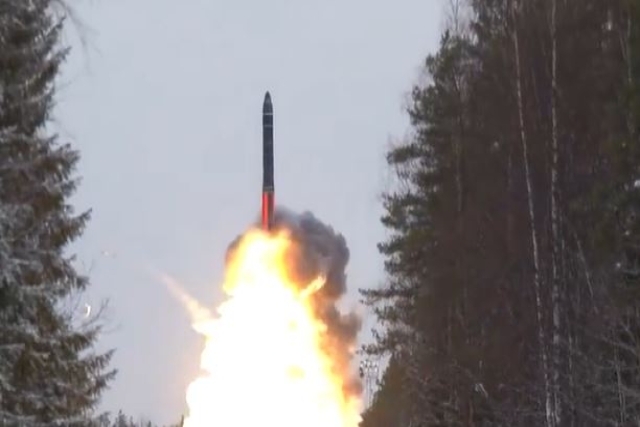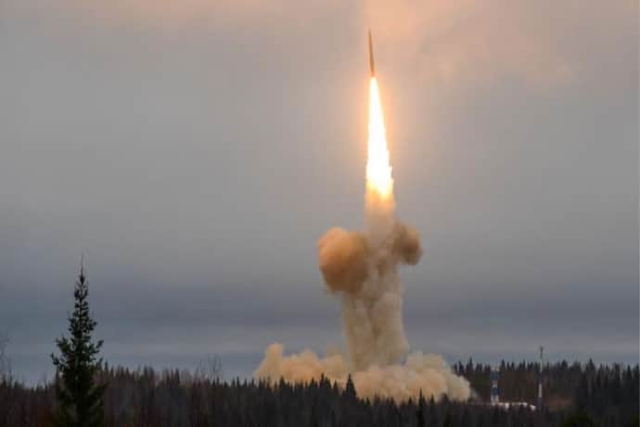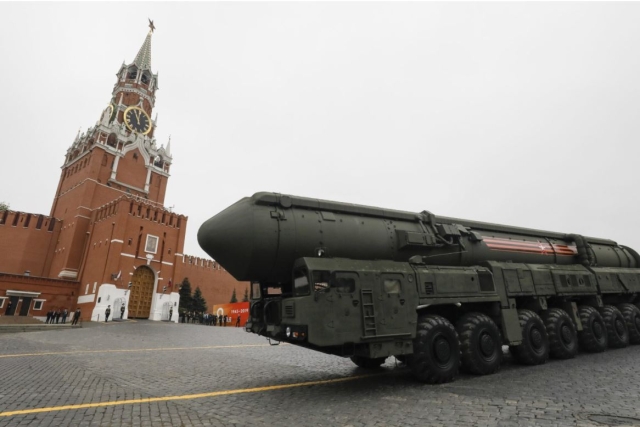Russia's Most Lethal Hypersonic Missile, "Oreshnik" Commences Production
Putin confirms mass production of the hypersonic missile, set to target military and industrial facilities

Russian President Vladimir Putin announced the commencement of mass production of the Oreshnik hypersonic missile system, which has become one of the country’s most potent weapons in its ongoing conflict with Ukraine.
Speaking at the CSTO Collective Security Council in Astana, Kazakhstan, Putin confirmed that the missile is now in large-scale production and is poised to target critical Ukrainian military infrastructure.
The Oreshnik missile, a variant of Russia’s RS-26 Rubezh missile (a shortened version of the RS-24 YARS missile), features a powerful thermal warhead that can reach temperatures of 4,000°C—twice the temperature of a jet engine. This intense heat is capable of vaporizing concrete, destroying hardened military hardware, and even melting steel beams, offering the missile strike capabilities comparable to a meteorite impact. Putin described its effect as "obliterating anything in the strike center into elemental particles."
“This is like a falling meteorite. We know from history where meteorites had fallen and what the consequences were. What lakes were formed,” the Russian leader said.
The new missile system is designed to travel at speeds of up to Mach 10, allowing it to strike targets within minutes. It carries dozens of homing warheads, making it capable of devastating precision attacks. The missile’s impact is so destructive that it can be compared to the force of a nuclear explosion, reducing its target area to dust.
The Oreshnik missile system is intended to target military facilities, decision-making centers in Kyiv, and industrial sites across Ukraine. The Russian military has already carried out successful tests of the missile, including a strike on the PA Pivdenmash factory in Dnipro, a key location in Ukraine's aerospace industry. The attack, which featured multiple sub-munitions, is part of Russia’s broader strategy to counter Ukrainian missile strikes on Russian territory.
The missile’s design allows it to be launched from a transporter-erector-launcher (TEL), capable of launching both hypersonic glide vehicles and traditional ballistic missiles. The Oreshnik’s speed and unpredictability in flight make it difficult to intercept using current missile defense systems.

The U.S. Department of Defense confirmed it was an Intermediate Range Ballistic Missile (IRBM), not an ICBM.
Unlike traditional ballistic missiles, hypersonic weapons, like the Russian Avangard glide vehicle, travel on the edge of space before re-entering the atmosphere and evading interceptors. A version of Avangard is believed to be carried by the RS-26.
In a missile strike on the Ukrainian city of Dnipro, the RS-26 released six sub-munitions, each dispersing six smaller sub-munitions, totaling 36 impacts. These munitions, possibly kinetic energy weapons, appeared to glow from atmospheric entry heat. The target was the PA Pivdenmash factory, which manufactures rocket motors and space technology.
As Russia accelerates the production of this weapon, it continues to study its effectiveness in real-world conditions, using ongoing military operations as a testing ground.











